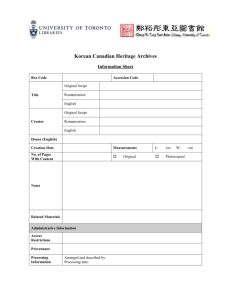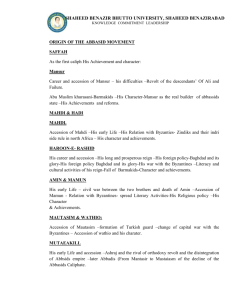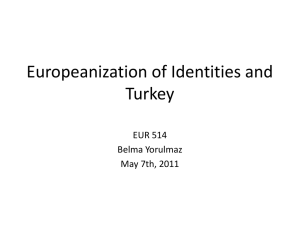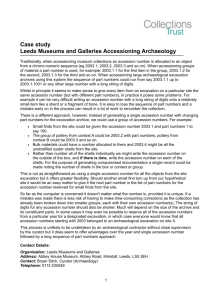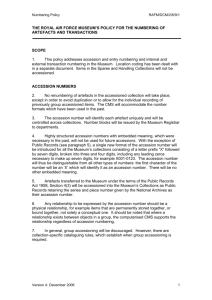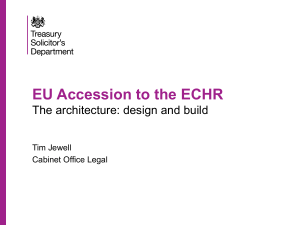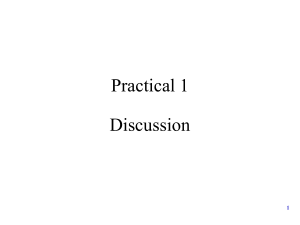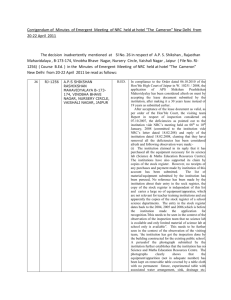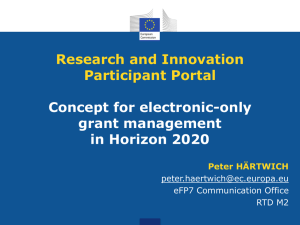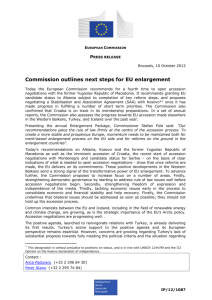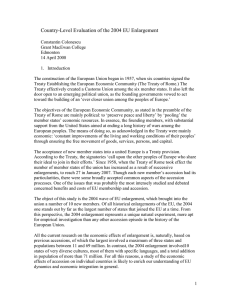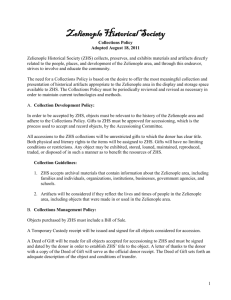Case study Wakefield Cultural Services Inventory
advertisement
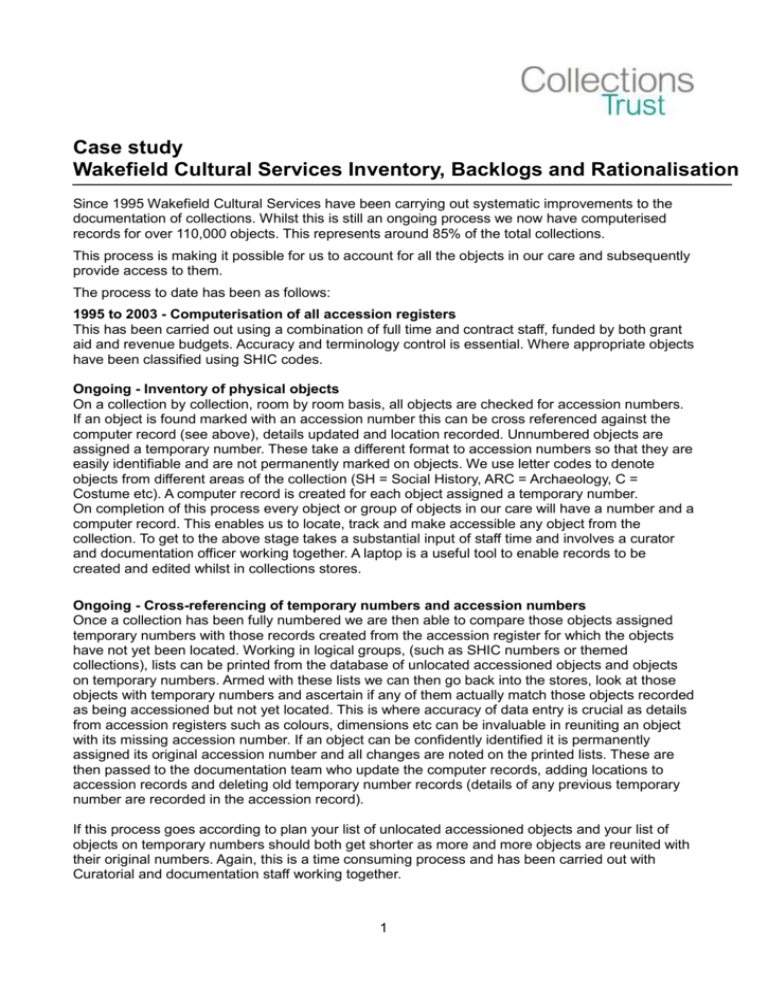
Case study Wakefield Cultural Services Inventory, Backlogs and Rationalisation Since 1995 Wakefield Cultural Services have been carrying out systematic improvements to the documentation of collections. Whilst this is still an ongoing process we now have computerised records for over 110,000 objects. This represents around 85% of the total collections. This process is making it possible for us to account for all the objects in our care and subsequently provide access to them. The process to date has been as follows: 1995 to 2003 - Computerisation of all accession registers This has been carried out using a combination of full time and contract staff, funded by both grant aid and revenue budgets. Accuracy and terminology control is essential. Where appropriate objects have been classified using SHIC codes. Ongoing - Inventory of physical objects On a collection by collection, room by room basis, all objects are checked for accession numbers. If an object is found marked with an accession number this can be cross referenced against the computer record (see above), details updated and location recorded. Unnumbered objects are assigned a temporary number. These take a different format to accession numbers so that they are easily identifiable and are not permanently marked on objects. We use letter codes to denote objects from different areas of the collection (SH = Social History, ARC = Archaeology, C = Costume etc). A computer record is created for each object assigned a temporary number. On completion of this process every object or group of objects in our care will have a number and a computer record. This enables us to locate, track and make accessible any object from the collection. To get to the above stage takes a substantial input of staff time and involves a curator and documentation officer working together. A laptop is a useful tool to enable records to be created and edited whilst in collections stores. Ongoing - Cross-referencing of temporary numbers and accession numbers Once a collection has been fully numbered we are then able to compare those objects assigned temporary numbers with those records created from the accession register for which the objects have not yet been located. Working in logical groups, (such as SHIC numbers or themed collections), lists can be printed from the database of unlocated accessioned objects and objects on temporary numbers. Armed with these lists we can then go back into the stores, look at those objects with temporary numbers and ascertain if any of them actually match those objects recorded as being accessioned but not yet located. This is where accuracy of data entry is crucial as details from accession registers such as colours, dimensions etc can be invaluable in reuniting an object with its missing accession number. If an object can be confidently identified it is permanently assigned its original accession number and all changes are noted on the printed lists. These are then passed to the documentation team who update the computer records, adding locations to accession records and deleting old temporary number records (details of any previous temporary number are recorded in the accession record). If this process goes according to plan your list of unlocated accessioned objects and your list of objects on temporary numbers should both get shorter as more and more objects are reunited with their original numbers. Again, this is a time consuming process and has been carried out with Curatorial and documentation staff working together. 1 2005 onwards - Rationalisation of remaining objects on temporary numbers It is inevitable that some objects have remained on temporary numbers and not been matched successfully to accession numbers. Our next collections management task is to decide what to do with these largely unprovenaced objects. We are just beginning this stage of the process where we will have to decide if we wish to retain or dispose of the objects. This will involve careful study of the collecting policy, investigation of possible transfers to other institutions, analysis of old loan in and daybooks, and a review of how objects have been used since being in our care. Some will undoubtedly be accessioned with new numbers, others will fall outside of our collecting remit and alternative homes will be sought. Some facts and figures 110,000 objects recorded on computer 10,000 of these on temporary numbers 2000 objects so far reunited with original accession numbers Staff involved over the last 10 years: 8 full time curators; 4 full time documentation officers; 7 temporary documentation assistants (At any one time 4 curators, 1 documentation officer and 1 documentation assistant, none of whom have had the luxury of working only on this project) Contact Details: Organisation: Wakefield Cultural Services Address: Wakefield Museum, Wood Street, Wakefield, WF1 2EW Contact: Tim Burge, Registrar Telephone: 01924 305356 This work is licensed under the Creative Commons Attribution-NonCommercial-Share Alike 2.0 UK: England & Wales License. To view a copy of this license, visit http://creativecommons.org/licenses/by-nc-sa/2.0/uk/ 2
